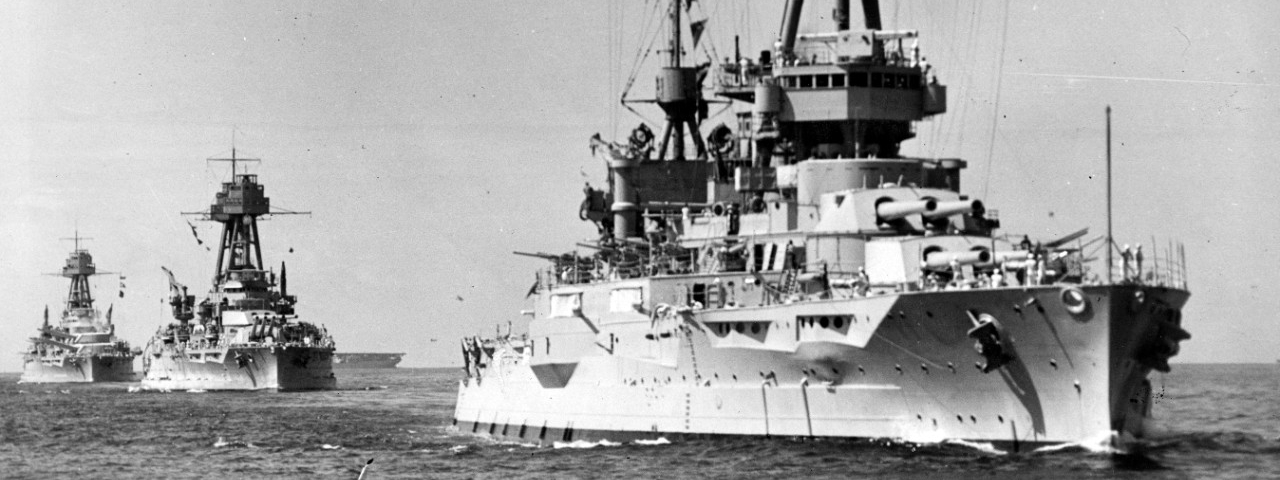USS New York, lead ship of a two-ship class of 27,000-ton battleships, was built at the New York Navy Yard. Commissioned in April 1914, her first active service was off Vera Cruz, Mexico, during the U.S. intervention there. After more than three years of operations off the east coast and in the Caribbean, in December 1917 New York crossed the Atlantic to join the British Grand Fleet. She was flagship of the U.S. battleships of the Sixth Battle Squadron during the remainder of the First World War.
In mid-1919, New York transited the Panama Canal to the Pacific, where she was based during the next decade and a half. As a unit of the Battle Fleet, she took an active part in the exercises, drills and gunnery practices that were regularly held in the Pacific and Caribbean. New York underwent modernization in 1925-27, receiving new oil-fired boilers, anti-torpedo bulges on her hull sides, heavier deck armor, up-to-date gunfire control mechanisms and many other improvements that enhanced her combat capabilities. After being transferred to the Atlantic in the mid-1930s, she visited England in 1937 as the U.S. representative to the British Coronation naval review. Over the next three years, the battleship was actively employed as a training ship.
With the coming of war to Europe, New York participated in Neutrality Patrol operations, and, as the U.S. drew closer to the conflict in 1941, helped in the occupation of Iceland and in escorting convoys. Her convoy activities continued after the United States became a combatant in December 1941. In November 1942, New York also took part the North African invasion, providing gunfire support for landings at Safi, Morocco. She spent 1943 and most of 1944 on escort and training duties, steaming to the Pacific war zone in early 1945. In February, New York's big guns were active bombarding Iwo Jima before and during the Marines' assault on that island. She was similarly employed off Okinawa from late March until June, and was lightly damaged by a suicide plane on 14 April 1945.
Following the Japanese capitulation in August 1945, New York moved back to the Atlantic and was at New York City for the Navy Day fleet review in late October. Her last active service was as a target during the atomic bomb tests at Bikini, Marshall Islands, in July 1946. Too radioactive and far too old for further use, she decommissioned a month later. In July 1948, USS New York was towed out to sea off Pearl Harbor and sunk as a target for Navy aircraft and ships.



